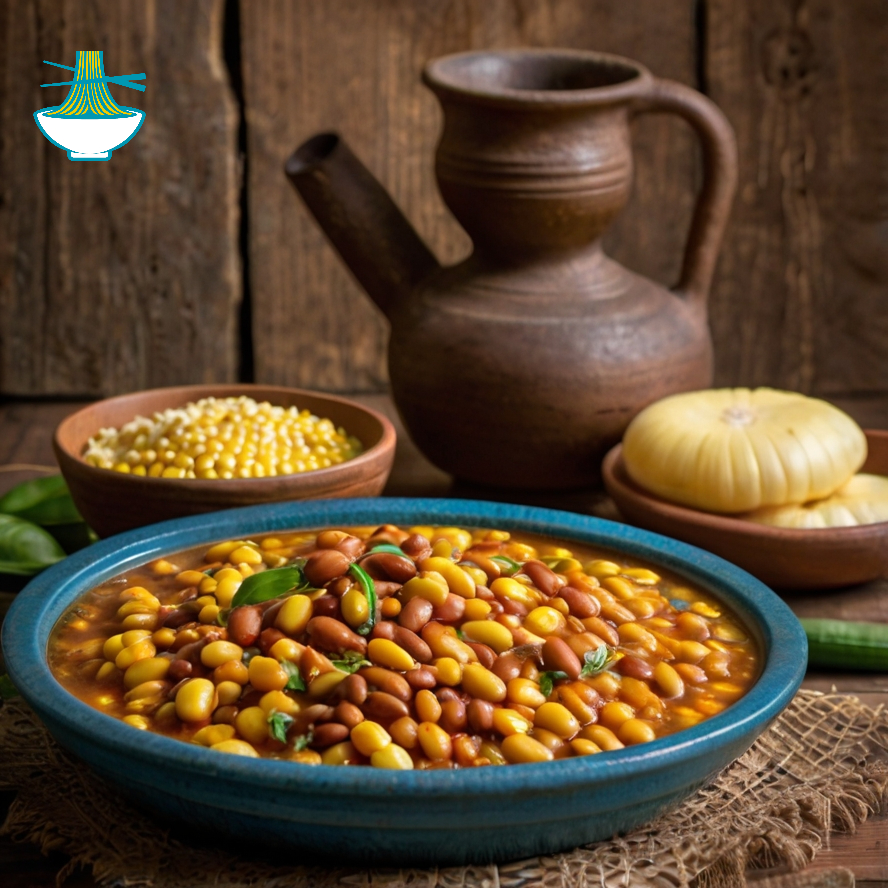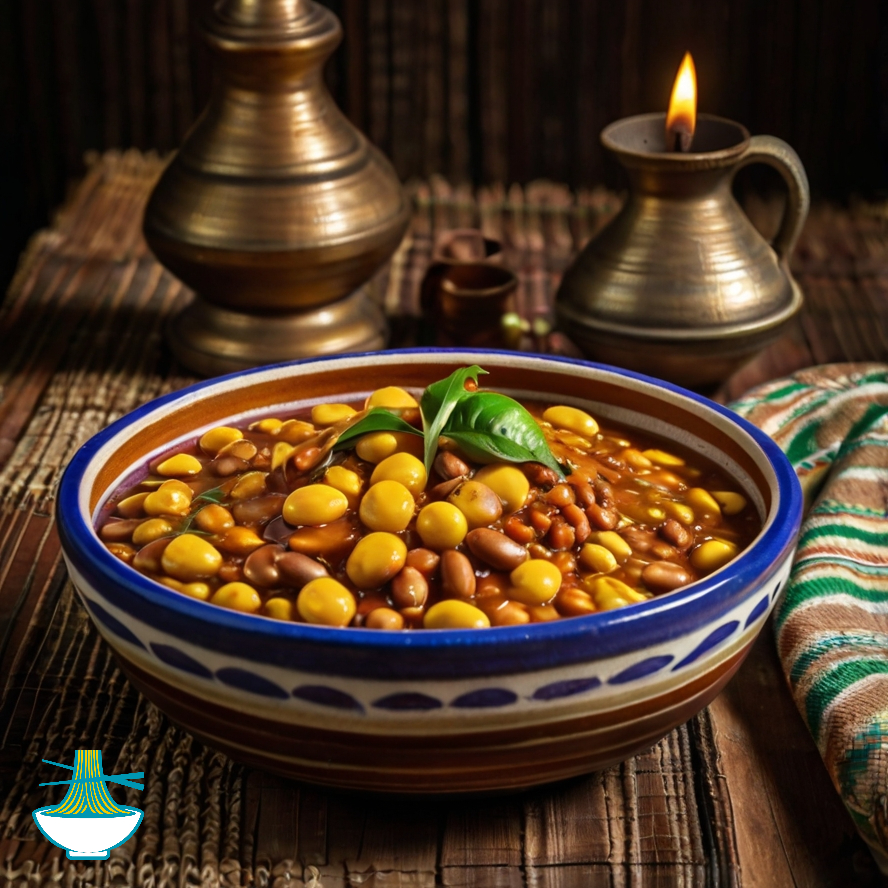Discover the rich flavors of Likhobe Tsa Ntja, a beloved traditional dish made from beans and maize. This popular recipe, cherished in rural communities, combines hearty ingredients for a comforting and nutritious meal. Follow our step-by-step guide to prepare this authentic dish and enjoy a taste of tradition.
Ingredients:
- 2 cups dried beans (such as black beans or kidney beans)
- 2 cups maize (corn kernels), fresh or dried
- 1 large onion, chopped
- 2 cloves garlic, minced
- 1 large tomato, chopped
- 1 green bell pepper, chopped
- 1 tablespoon vegetable oil
- 1 teaspoon paprika
- 1 teaspoon ground cumin
- Salt and pepper to taste
- 4 cups water or vegetable broth
- Fresh herbs (optional, for garnish)
Instructions:
Prepare the Beans:
- If using dried beans, soak them in water overnight. Drain and rinse before cooking. If using canned beans, rinse and drain them.
Cook the Maize:
- If using dried maize, soak it overnight and cook it in boiling water for about 1 hour or until tender. If using fresh maize, skip this step.
Cook the Beans:
- In a large pot, heat the vegetable oil over medium heat. Add the chopped onions and garlic, and sauté until softened.
Add Vegetables:
- Add the chopped tomato and green bell pepper to the pot. Cook for a few minutes until the vegetables begin to soften.
Season:
- Stir in the paprika and ground cumin. Season with salt and pepper to taste.
Combine Ingredients:
- Add the soaked or canned beans and cooked maize to the pot. Pour in the water or vegetable broth. Stir to combine.
Simmer:
- Bring the mixture to a boil, then reduce the heat to low. Cover and simmer for about 30 minutes, or until the beans are tender and the flavors are well combined.
Garnish and Serve:
- Garnish with fresh herbs if desired. Serve hot as a hearty main dish or side.
Enjoy the traditional flavors of Likhobe Tsa Ntja with your family and friends!
Nutritional Values:
Dried Beans (Black Beans or Kidney Beans):
- Calories: 225
- Protein: 15 grams
- Carbohydrates: 40 grams
- Fiber: 13 grams
- Fat: 1 gram
- Iron: 3.6 mg (20% DV)
- Folate: 256 mcg (64% DV)
Benefits:
- High in Protein: Great source of plant-based protein, essential for muscle repair and growth.
- Rich in Fiber: Supports digestive health and helps maintain healthy blood sugar levels.
- Iron-Rich: Supports oxygen transport and prevents anemia.
- Folate: Important for cell division and proper fetal development during pregnancy.
Maize (Corn Kernels):
- Calories: 143
- Protein: 4 grams
- Carbohydrates: 31 grams
- Fiber: 3.5 grams
- Fat: 2 grams
- Vitamin C: 8.4 mg (14% DV)
- Magnesium: 37 mg (9% DV)
Benefits:
- Good Source of Carbohydrates: Provides energy and supports overall body function.
- Rich in Fiber: Aids digestion and promotes a healthy gut.
- Vitamin C: Supports the immune system and acts as an antioxidant.
- Magnesium: Important for muscle and nerve function, as well as bone health.
Onion:
- Calories: 44
- Protein: 1 gram
- Carbohydrates: 10 grams
- Fiber: 1.9 grams
- Fat: 0 grams
- Vitamin C: 8.1 mg (13% DV)
- Folate: 30 mcg (8% DV)
Benefits:
- Antioxidants: Contains compounds like quercetin that help combat oxidative stress.
- Anti-inflammatory: May help reduce inflammation and support heart health.
- Supports Immune Health: Vitamin C helps boost the immune system.
Garlic:
- Calories: 4
- Protein: 0.2 grams
- Carbohydrates: 1 gram
- Fiber: 0.1 grams
- Fat: 0 grams
- Vitamin C: 1 mg (2% DV)
- Manganese: 0.1 mg (5% DV)
Benefits:
- Anti-inflammatory and Antioxidant: Contains allicin, which has anti-inflammatory and antioxidant properties.
- Supports Heart Health: May help lower blood pressure and cholesterol levels.
- Boosts Immunity: Supports overall immune function.
Tomato:
- Calories: 22
- Protein: 1 gram
- Carbohydrates: 5 grams
- Fiber: 1.5 grams
- Fat: 0 grams
- Vitamin C: 16 mg (27% DV)
- Lycopene: 2573 mcg
Benefits:
- Rich in Antioxidants: Lycopene helps protect cells from damage and supports heart health.
- Vitamin C: Enhances immune function and skin health.
- Low in Calories: Ideal for maintaining a healthy weight.
Green Bell Pepper:
- Calories: 24
- Protein: 1 gram
- Carbohydrates: 6 grams
- Fiber: 2 grams
- Fat: 0 grams
- Vitamin C: 95 mg (159% DV)
- Vitamin A: 1,089 IU (22% DV)
Benefits:
- High in Vitamin C: Supports immune function and skin health.
- Rich in Antioxidants: Contains various antioxidants that may reduce the risk of chronic diseases.
- Low in Calories: Suitable for weight management and overall health.
Vegetable Oil:
- Calories: 120
- Protein: 0 grams
- Carbohydrates: 0 grams
- Fiber: 0 grams
- Fat: 14 grams (mostly unsaturated fats)
- Vitamin E: 1.9 mg (13% DV)
Benefits:
- Source of Healthy Fats: Provides essential fatty acids that support heart health.
- Vitamin E: Acts as an antioxidant and supports skin health.
Paprika:
- Calories: 6
- Protein: 0.3 grams
- Carbohydrates: 1.2 grams
- Fiber: 0.6 grams
- Fat: 0.3 grams
- Vitamin A: 1,445 IU (29% DV)
- Vitamin C: 1.4 mg (2% DV)
Benefits:
- Rich in Vitamin A: Supports vision health and immune function.
- Contains Antioxidants: Helps protect cells from damage.
- Anti-inflammatory Properties: May help reduce inflammation.
Ground Cumin:
- Calories: 8
- Protein: 0.4 grams
- Carbohydrates: 1 gram
- Fiber: 0.6 grams
- Fat: 0.4 grams
- Iron: 0.9 mg (5% DV)
Benefits:
- Supports Digestion: Known to aid in digestion and reduce symptoms of indigestion.
- Rich in Iron: Contributes to healthy red blood cells and prevents anemia.
Enjoy the diverse flavors and health benefits of this traditional dish!


Comments